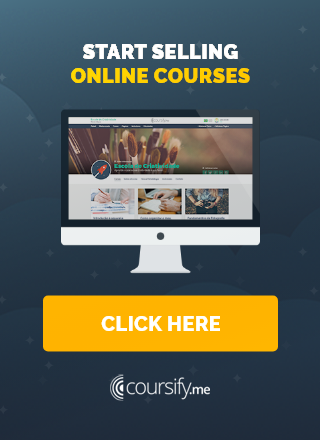Beginner’s Guide to Video Podcast Recording and Launch
A video podcast is an investment that can pay off big time. Why? More people are warming up to this format. So, it’s a nice way to grow your audience and keep them engaged.
But let’s be honest, creating and launching a video podcast isn’t the easiest thing. Between juggling the technical and creative parts, you might even find yourself wondering if it’s all worth it.
Also, with over 100,000 podcasts on Spotify alone, it’s easy to feel like a small fish in a big pond. But don’t worry. Today’s guide will cover everything you need to know about video podcast recording and how to launch your newest content.
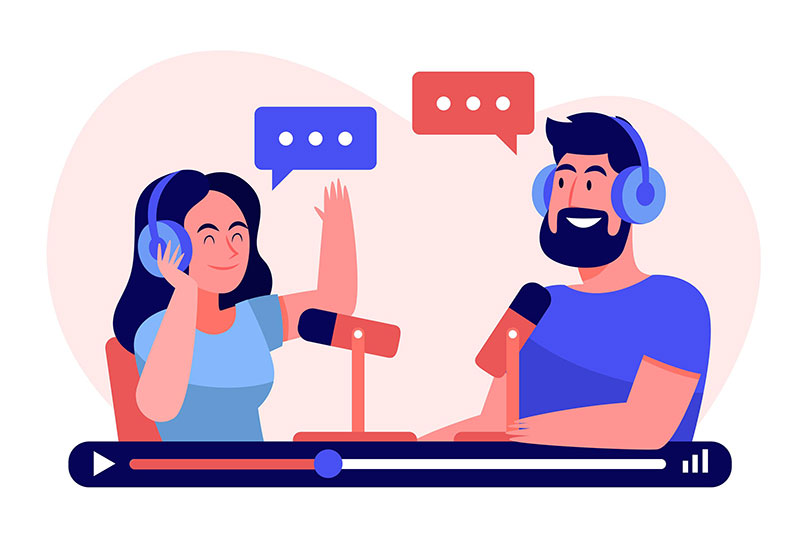
What Is a Video Podcast?
Put simply, a video podcast is a podcast with audio and video elements.
The video element could be as simple as a slideshow, or it could be a full-blown production with fancy editing, or somewhere in between. Here’s a nice example from the Higher Learning podcast:
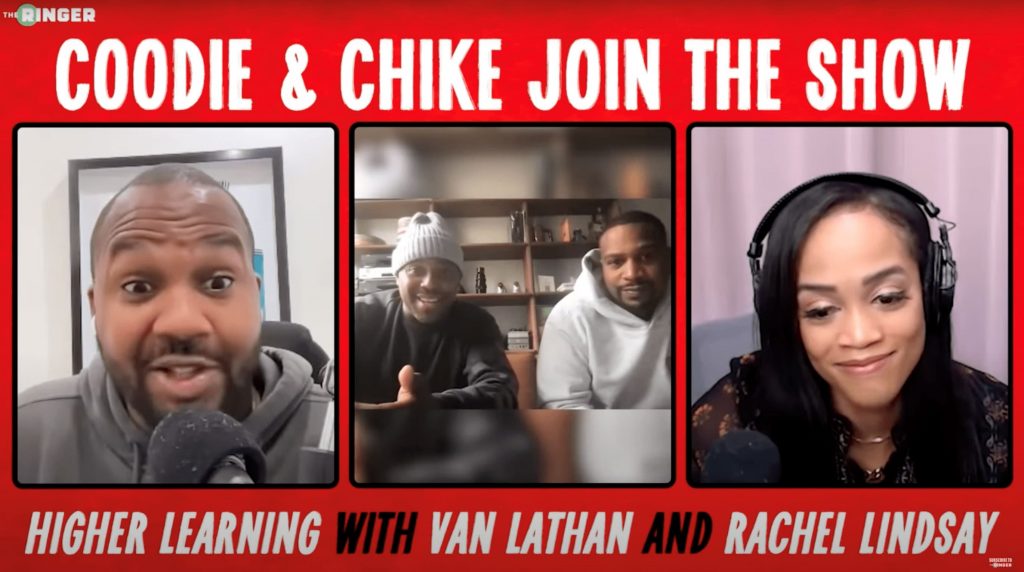
Just like traditional podcasts that are purely in audio form, you can host video podcasts on major podcasting platforms—Spotify, Apple Music, and so on. For example, the podcast above came from Spotify.
– How to set up a home studio to record videos
Why create a video podcast?
People generally prefer consuming visual content. Why do you think visuals like infographics and, of course, video content are an integral part of most B2C and essential B2B strategies? It’s because they work.
The same applies to video podcasts — the first reason you should care is that podcast audiences love them. In fact, 46% of podcast listeners prefer to watch video podcasts.
It’s not hard to see why.
The video adds another layer of engagement, allowing them to see the host(s) and guests, their expressions, and body language. This can make the experience more personal and engaging for the audience.
But the benefit doesn’t stop there; it’s also easier to repurpose your video podcasts for different content marketing channels.
You can easily chop up your video podcast into shorter clips for social media. You can even convert it into audio formats to please the traditional podcast purists.
The point is that you can squeeze more mileage out of your content and reach a wider audience across different platforms.
– 10 ideas to create social media content
How to Record and Launch a Video Podcast
Ready to give video podcast recording a try? Here are some tips to follow:
1. Determine the podcast format to use and topic
The first step in video podcast recording is deciding on a format that works for you.
There are four popular formats to consider, each with its upsides and downsides: interviews, co-hosting, solo, and static video podcasts.
An interview podcast is more like a Q&A session, where you ask guests different questions on your chosen topic.
This format is an excellent way to bring diverse perspectives into every episode. but it does require a lot of guest follow-ups, coordination, and scheduling.
The second format involves talking to a co-host. So, you can bounce ideas off each other and offer different perspectives to your audience.
The key here is finding a co-host you have great chemistry with. While this format encourages natural conversation, be prepared for potential disagreements.
Keep in mind that you can record interviews and co-hosted podcasts in person or remotely.
In-studio recordings offer deeper connections but require investments in equipment, lighting, and location. On the other hand, remote interviews and co-hosting offer flexibility and cost savings, but be mindful of potential network issues.
So, it’s up to you to choose the option that aligns best with your budget and desired level of connection with your audience.
If you’re comfortable being the center of attention, the solo video recording format is just for you. It lets you share your knowledge and expertise directly with your audience. A good example is Off the Record podcast by DJ Akademiks.
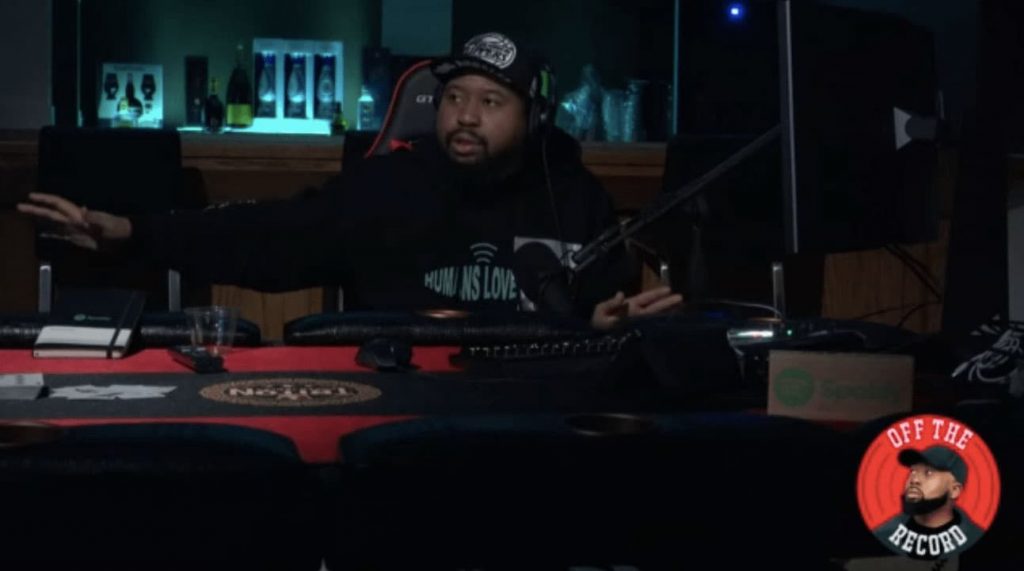
While you retain control over your content and delivery, your content might also lack the variety other formats offer.
The final format is static video. This format features pre-recorded audio with a static image or slideshow accompanying it. Here’s an example from the John Robbins podcast:
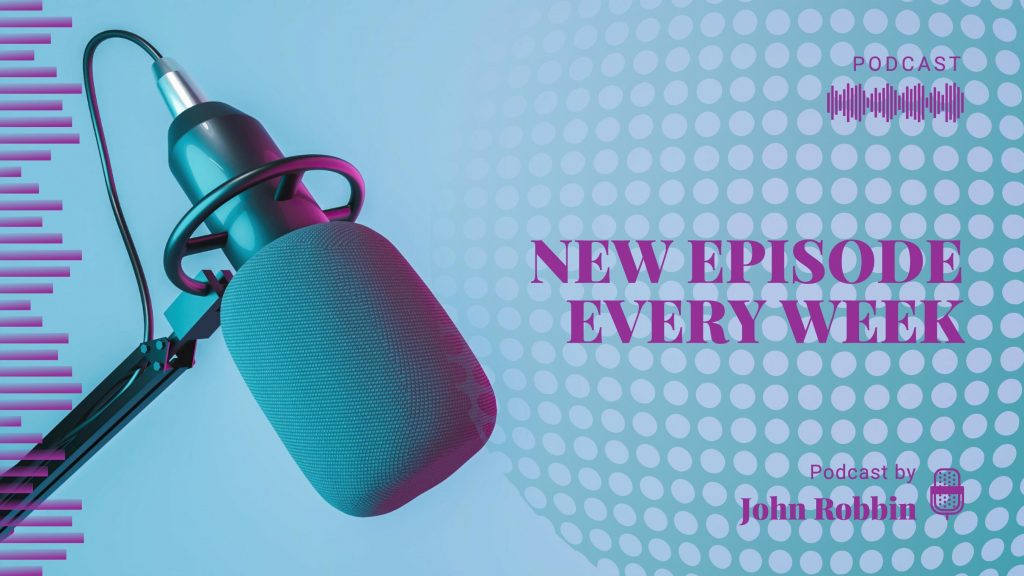
Static video is the easiest to create so far. You don’t need much editing, and it can be a good starting point for beginners. Mind you, it’s also the least engaging format.
So, go ahead and weigh the upsides and downsides of each format to pick the right format for you.
Regardless of the format you’ve chosen, the most important thing is talking about a topic you’re comfortable delivering on. That’s the only way your enthusiasm will shine through.
For example, if you’re passionate about SEO, you could cover topics like choosing a SaaS link building agency or mastering SEO on a shoestring budget.
– Tips for creating a video script
2. Record your video and audio
Once you’ve settled on a format and topic, you may then proceed to the recording process.
Start by creating a script that outlines the major sections, questions, and talking points. This ensures that you don’t leave any stone unturned.
If you’ll be having a guest, it’s important to share this script with them as well to keep everyone on the same page.
That aside, here’s a rundown of the basic recording equipment you’ll need:
- Camera
- Microphone
- Headphones
- Computer
- Editing Software
For remote recording, you’ll also need podcast recording software. Wavepad and Riverside are great examples. But if you’re recording in person, a tripod, microphone stands, and extra lighting are important to enhance your setup.
When it comes to recording, choose a well-lit and quiet space.
In addition, it’s always a good idea to capture a separate audio recording alongside your video. There are two reasons for this.
First up, most video editing software solutions don’t offer the same level of audio fine-tuning as dedicated audio editing programs. And you know audio quality matters in podcasts.
Having separate audio and video files also comes in handy when uploading to platforms like Spotify, which may require that you upload them separately.
Additionally, converting audio to text is also helpful for generating transcripts of your content. This converts your audience into getting along easily and allows for reusing the blog posts in writing articles or social media updates.
Most video podcast recording software solutions allow you to access the video and audio in separate files. But if you’re recording in-studio, set up an external microphone for a separate audio recording. Then, start both recordings simultaneously for easier syncing post-production.
Also, for those looking to boost their content creation, consider using a text to video AI tool. This AI technology can convert written text into engaging video content, making it easier to repurpose blog posts or social media updates into visually appealing videos. With text-to-video AI, you can efficiently expand your content formats and reach a broader audience.
– Meet 4 Voice Recorder Models for your Business
3. Create a customized thumbnail
Your thumbnail is the first impression you leave on your audience even before they hit the play button. So, if it looks sloppy and unprofessional, it might discourage them from listening to your podcast.
When creating a thumbnail, you should keep a few things in mind. First, don’t clutter it with too much text or complex visuals. Always aim for clear, concise messages that convey the episode’s theme.
Also, make sure it’s catchy enough with bright visuals, high-quality images, and engaging graphics.
The text matters, too. So, include a concise, attention-grabbing title that accurately reflects the episode’s content.
The good thing is you don’t need to be a design expert to create a thumbnail.
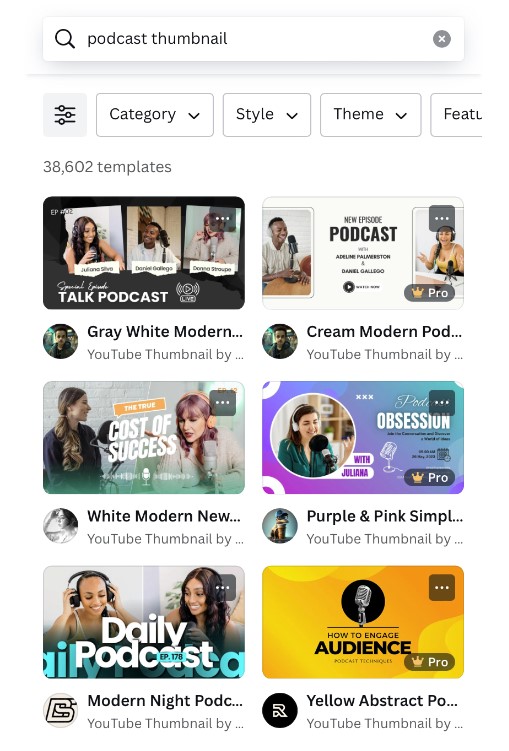
Tools like CapCut, Canva, and Filmora offer templates that you can easily customize. See Canva ‘s templates above, for instance.
4. Start editing, include intro and outro
You don’t want to abruptly jump into your recorded section in the final video, it can be jarring for listeners. That’s where intros come in handy.
Audio podcast intros are usually short upbeat music or sound at the start, which helps with pacing.
You can use such sounds with your video podcasts, too. But this time, since this is a video podcast, you need visuals to accompany them. This could be motion graphics or a captivating snippet from the episode.
Your intro should also include your shot title, episodes, and maybe quotes to keep your audience excited about what’s to come.
Ideally, your intro also shouldn’t exceed five to ten seconds. Plus, you need to keep it consistent across your podcast videos for recognizability.
When people see your intro, they should immediately associate it with your podcast.
As for your outro, you can use similar visual elements used for the intro. But for the music part, you need something less upbeat to ease your audience out.
Also, your focus in your outro should be recapping what the podcast was about or including a call-to-action (CTA) to encourage audience engagement.
Your CTA doesn’t have to promote a product. It could also be inviting them to subscribe, leave a comment, or connect with you on social media.
When editing your video to accommodate the accompanying visuals to your outro, intro, and polish your other visuals, all the tools mentioned in the previous section can help, but they have limited features.
So, if you’re willing to dedicate some time to learning, check out more advanced tools like Adobe Premiere, After Effects, and DaVinci Resolve.
As for your audio editing, you can use software platforms like Adobe Podcast, GarageBand, or Audacity.
During the overall video and audio editing process, pay attention to basic cuts. Essentially, get rid of unwanted pauses, awkward silences, or any minor mistakes captured during recording.
You also want to keep transitions smooth between video clips, slides, or audio segments to maintain a professional and engaging flow.
– Basic Video Editing Techniques
5. Publish and promote video podcast
Now that your podcast is good to go, you may proceed to distribute and publish it.
For publishing, consider major podcast platforms like Spotify and Apple Podcasts. You can also use popular video hosting platforms like YouTube or Vimeo, or simply upload it to your website.
But before choosing any of it, ensure that you’ve familiarized yourself with their specifications. For instance, Spotify only supports .MP4 and .MOV files and recommends a minimum resolution of 1080. It also doesn’t support multi-channel audio. These are all important details to keep in mind.
After uploading your podcast, the next step is promoting it. Social media platforms can be your best friend here.
You can share short snippets of engaging content from your video podcast on your social channels to grab attention.
You can even consider investing in paid social media promotions to broaden your podcast’s reach. With paid ads, you get to target specific demographics and interests, ensuring your promotion hits the right audience.
Another effective strategy is to collaborate with other podcasters in your niche.
By cross-promoting each other’s content, you can tap into new audiences and expand your listener base. Below is an example of a podcast collaboration between Web3 Unlocked and the Push Protocol:
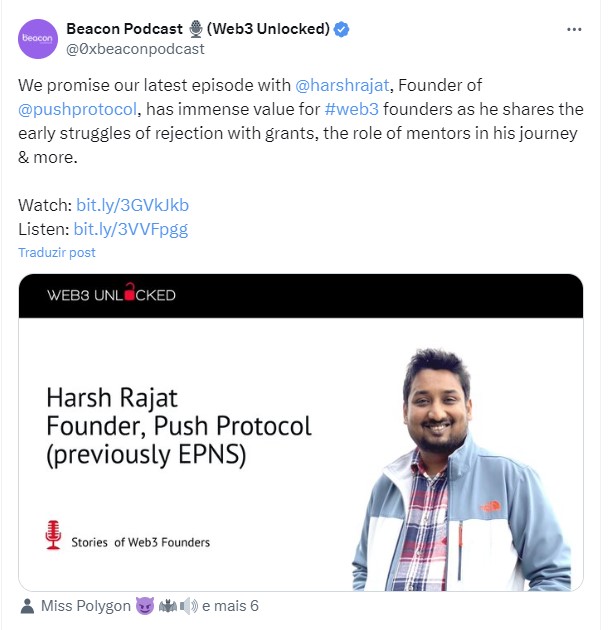
On a final note, don’t forget your email list, if you maintain one. You can broadcast your podcast episode links to keep your subscribers in the loop.
With these promotion tactics in your toolkit, your podcast is sure to gain traction and find its audience.
– How to Choose the Right Video Hosting Platform
Use video podcasts to improve your online courses
Video podcasts have been gaining traction recently because of how personal and engaging they can be. Want to jump on the video podcasting bandwagon? Just follow the essential recording tips mentioned in this article.
Simply choose the right format, record your video and audio, and design a thumbnail. Don’t forget to edit the podcast and insert an intro and outro. Finally, promote it!
Implement these tips to kickstart your video podcasting journey. You’ll soon reap the benefits of your newest content.
Producing a video podcast is also a perfect way to record more dynamic and interactive lessons for your online course.
Elearning platform (LMS), Coursify.me has all the necessary features for you to import and integrate content from video hosting platforms such as Vimeo and YouTube.
– Whats is a Learning Management System
Instructors can embed their hosted videos into any of these channels on their page on Coursify.me, leaving their lessons even better and more complete.
Visit our website and take advantage of all the features of our platform to create and sell quality online courses.

